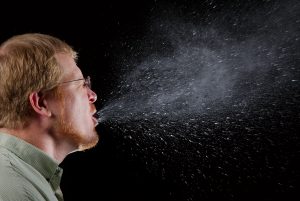Interesting article about a “living alternative to concrete”. Ignoring the fact that the final product is not actually living, this is a pretty cool idea. This product uses bacteria to produce a concrete-like substance using much less energy than traditional methods. A number of similar ideas are the in the works including mushroom-grown bricks. Some …
Heard a very interesting story on NewsHour yesterday about portable classrooms: The story is reported by Katie Campbell of KCTS in Seattle. Some of the issues discussed in the context of “reinventing” portable classrooms include carbon dioxide monitoring, sustainability and the Living Building Standards, using solar for electricity, natural ventilation instead of noisy HVAC units, …
Having been camped out in Portland, OR this week to speak at the 2014 Joint Aquatic Sciences Meeting, I woke up this morning to find a “boil water alert” had been issued for the entire city. Repeated testing over the last few days has found fecal contamination (E. coli) in the city’s reservoirs. So that means a lockdown …
Just pointed to this story: Microbial stowaways to Mars identified : Nature News & Comment by Darlene Cavalier, our collaborator on the “Space Microbes” Project MERCCURI. The article reports on a presentation by Stephanie Smith at the ASM 2014 meeting going on in Boston. Smith presented results from characterizing (via culturing) the microbes present on various parts …
Hypoallergenic pets no more! In a recent article (2013) from PNAS, researchers have found that mice exposed to dust collected from households that had dogs compared to dust collected from households with no pets had significantly lower lung Th2 cytokine mRNA expression levels (IL-4 and IL-13) compared with those treated with dust from no pet houses. …
Quick post – just saw this Tweet from the Airmid Healthgroup Your home’s odor may be making you sick; microbial volatile organic compounds http://t.co/8M7U84L5Oi via @USATODAY – Airmid Healthgroup (@AirmidHealth) May 13, 2014 //platform.twitter.com/widgets.js It points to a story in USA Today by Melissa Pandika that may be of interest – Your home’s odor may be …
UPDATE 1 by Jonathan Eisen on May 18, 2014. I have flagged this post as being offensive (see comments for more detail). The author has now lost his permission to post directly without screening and am considering deleting this post (due to the tone of this post and other posts). I am for now leaving it up …
“In 2010, Americans were prescribed 258 million courses of antibiotics, a rate of 833 per thousand people. Such massive usage, billions of doses, has been going on year after year.” or so says Martin Blaser who has written a book (“Missing Microbes: How the Overuse of Antibiotics is Fueling Our Modern Plagues” published by Macmillan …
Most of us spend most of our time indoors amidst suspended biological particles — spores, pollen, bits of dead skin, bacteria, viruses, and so on. We care about these particles because they may have human health impacts (positive or negative), effects on building materials, and possible forensic uses. Two sources known to be important for …
In Dirty Dog: Do Pets Track Bacteria in Your Home? on the Popular Science blog, science journalist Brooke Borel describes her recent experience contributing to the citizen science experiment called The Wild Life of Our Homes run by Rob Dunn and Holly Menninger at North Carolina State University. Here she presents a beautiful graphic depicting how the samples that …

